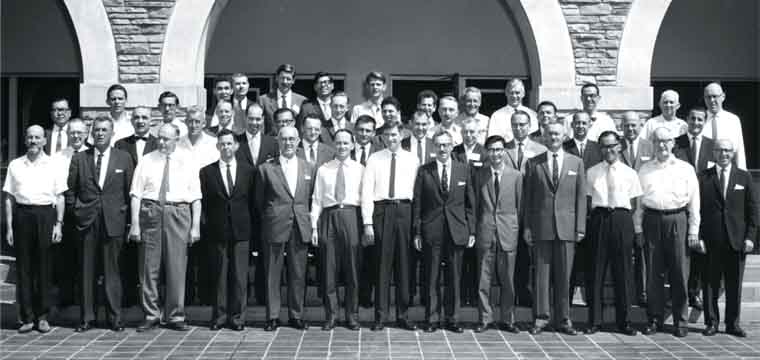The plans for the IGY, the International Geophysical Year, 1957-58, included a major Antarctic component.
At the International Council of Scientific Unions (ICSU) Antarctic meeting held in Stockholm on 9 – 11 September 1957, it was decided that there was need for further international organisation of scientific activity in Antarctica, and that a committee should be set up for this purpose. The Bureau of ICSU invited the twelve nations actively engaged in Antarctic research to nominate a delegate each to a Special Committee on Antarctic Research (SCAR).
Delegates were also invited from the International Union of Geodesy and Geophysics (IUGG), the International Geographical Union (IGU), the International Union of Biological Sciences (IUBS), the International Union of Pure and Applied Physics (IUPAP) and the Union Radio Scientific Internationale (URSI). The following permanent delegates were nominated: Argentina – Captain L. de la Canal; Australia – Professor J. van Mieghem; France – Mons. B. Imbert; Japan – Professor T. Nagata; New Zealand – Dr. E. I. Robertson; Norway – Professor L. Harang (also representing URSI); South Africa – J.J. Taljaard; United Kingdom – Dr G. de Q Robin; United States – Dr L.M. Gould; USSR – Dr M.M. Somov; IUBS – Dr A. Brunn; IUGG – Ing. Gen. G. Laclavère; and IGU – Dr V. Schytt.
The first meeting of SCAR was held at the Hague from 3 – 6 February 1958 and all the participating nations and societies were represented except New Zealand and South Africa. Dr R. Fraser and Colonel E. Herbays represented ICSU. The meeting elected Ing. Gen. G. Laclavère President, Professor K.E. Bullen Vice-President, and Dr V. Schytt Secretary. The main task of the committee at the first meeting was to “prepare a plan for the scientific exploration of Antarctica in the years following the completion of the International Geophysical Year programme”. A Finance Committee was also formed. Three working groups were set up to discuss and prepare future research programmes and each later reported their recommendations to the Committee.
Subsequently SCAR was renamed the Scientific Committee on Antarctic Research.



